-
 Bitcoin
Bitcoin $111100
0.49% -
 Ethereum
Ethereum $4304
0.21% -
 XRP
XRP $2.888
2.36% -
 Tether USDt
Tether USDt $0.9999
-0.03% -
 BNB
BNB $879.1
1.62% -
 Solana
Solana $207.9
2.67% -
 USDC
USDC $0.9998
-0.01% -
 Dogecoin
Dogecoin $0.2320
7.05% -
 TRON
TRON $0.3306
0.59% -
 Cardano
Cardano $0.8407
1.68% -
 Hyperliquid
Hyperliquid $48.50
3.55% -
 Chainlink
Chainlink $22.52
0.46% -
 Ethena USDe
Ethena USDe $1.001
-0.02% -
 Sui
Sui $3.395
0.74% -
 Bitcoin Cash
Bitcoin Cash $602.5
0.82% -
 Stellar
Stellar $0.3645
1.67% -
 Avalanche
Avalanche $24.82
0.93% -
 Hedera
Hedera $0.2211
0.99% -
 UNUS SED LEO
UNUS SED LEO $9.606
0.00% -
 Cronos
Cronos $0.2583
-2.44% -
 Litecoin
Litecoin $113.7
0.82% -
 Toncoin
Toncoin $3.094
0.39% -
 Shiba Inu
Shiba Inu $0.00001254
1.50% -
 Polkadot
Polkadot $4.040
4.96% -
 Uniswap
Uniswap $9.429
0.08% -
 Dai
Dai $0.9999
-0.01% -
 Ethena
Ethena $0.7629
3.04% -
 World Liberty Financial
World Liberty Financial $0.2111
-13.16% -
 Monero
Monero $269.9
0.50% -
 Aave
Aave $300.9
-0.41%
What are social tokens or community tokens?
Social tokens empower creators and communities by turning engagement into ownership, enabling direct monetization, governance, and exclusive access in decentralized digital ecosystems.
Sep 03, 2025 at 03:36 am
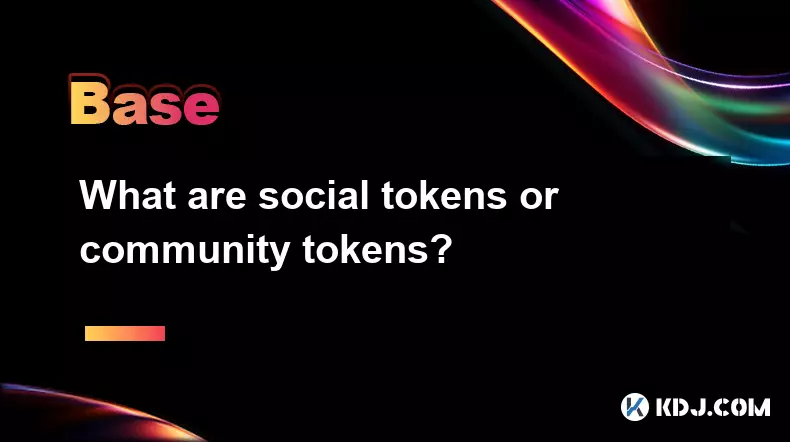
Understanding Social Tokens and Their Role in Digital Communities
1. Social tokens, also known as community tokens, are digital assets built on blockchain networks that represent value within a specific online community or ecosystem. Unlike traditional cryptocurrencies such as Bitcoin or Ethereum that function as general-purpose money, social tokens are designed to reflect influence, access, or participation in a particular group. These tokens are often issued by creators, influencers, or decentralized organizations to align incentives and deepen engagement with their audience.
2. The core idea behind social tokens is to monetize attention and community loyalty in a decentralized manner. When a content creator launches their own token, fans can purchase it to gain exclusive access to content, events, or voting rights. This transforms passive followers into active stakeholders. The value of the token can rise as the community grows, rewarding early supporters and encouraging long-term involvement.
3. There are generally two types of social tokens: personal tokens and community tokens. Personal tokens are tied to an individual—such as a musician, artist, or entrepreneur—and their reputation and output. Community tokens, on the other hand, are managed collectively, often through a DAO (Decentralized Autonomous Organization), where token holders participate in governance decisions. Both types rely on transparency and trust, enforced by smart contracts on blockchains like Ethereum or Polygon.
4. Utility is a major driver of social token adoption. Holders might unlock perks such as private Discord channels, early access to merchandise, or invitations to virtual meetups. Some communities use their tokens as internal currencies for tipping creators or purchasing digital goods. This utility layer strengthens the bond between members and incentivizes contribution, turning social capital into tangible rewards.
5. The issuance of social tokens typically occurs through mechanisms like bonding curves or liquidity bootstrapping pools. These models allow the token price to scale with demand, preventing early dumping and promoting fair distribution. Projects like Friends With Benefits (FWB) and BanklessDAO have demonstrated how token-based communities can fund initiatives, coordinate work, and maintain cultural cohesion without centralized control.
How Social Tokens Transform Creator Economies
1. In the traditional creator economy, platforms take a significant cut of earnings, and creators have limited control over their audience relationships. Social tokens shift this power dynamic by enabling direct monetization. A musician can issue a token that grants concert access, while a writer can offer subscriber-only articles to token holders, bypassing intermediaries entirely.
2. These tokens allow creators to diversify revenue streams beyond ads or sponsorships. By selling tokens, they raise capital upfront to fund projects, with the community sharing in the upside. As engagement increases, so can the token’s market value, creating a feedback loop where success benefits both the creator and supporters.
3. Social tokens also enable new forms of fan interaction. Instead of one-way content delivery, creators can host token-gated AMAs, collaborative playlists, or co-created art projects. This participatory model fosters deeper emotional investment and turns audiences into collaborators.
4. Platforms like Mirror and Rally have simplified the process of launching and managing social tokens, lowering the technical barrier for entry. With user-friendly interfaces and integrated wallets, creators can focus on building culture rather than coding smart contracts.
5. The psychological impact of ownership plays a crucial role. When fans hold a token, they feel a sense of belonging and responsibility toward the community’s success. This intrinsic motivation leads to higher retention rates and organic promotion, amplifying reach without paid advertising.
Challenges and Risks in the Social Token Space
1. Regulatory uncertainty remains a major hurdle. In many jurisdictions, social tokens may be classified as securities if they promise financial returns, triggering compliance requirements. Projects must carefully design tokenomics to avoid legal pitfalls, often relying on legal counsel to navigate evolving frameworks.
2. Market volatility can undermine community stability. If a token’s price drops sharply due to speculation or external market forces, it may erode trust and reduce participation. Sustainable models prioritize utility over price appreciation to maintain long-term engagement.
3. Governance conflicts can arise in decentralized communities. Disagreements over fund allocation or project direction may lead to forks or fragmentation. Transparent decision-making processes and clear contribution guidelines are essential to minimize friction.
4. Security risks are ever-present. Poorly audited smart contracts or compromised private keys can result in fund loss. High-profile hacks have underscored the need for robust security practices, including multi-signature wallets and third-party audits.
5. Adoption barriers persist, especially for non-crypto-native users. Managing wallets, understanding gas fees, and navigating decentralized apps can be daunting. Onboarding experiences must be simplified to attract mainstream participants without sacrificing decentralization.
Frequently Asked Questions
What is the difference between social tokens and NFTs?Social tokens are fungible digital assets used for access, governance, or rewards within a community. NFTs are non-fungible and represent unique ownership of digital items like art or collectibles. While both operate on blockchains, their use cases and economic models differ significantly.
Can anyone create a social token?Yes, technically any individual or group can create a social token using blockchain platforms like Ethereum or Polygon. Tools such as Coinable or Roll make the process accessible, though legal, technical, and strategic considerations should be addressed before launch.
How do social tokens gain value?Value accrues through utility, demand, and community growth. If a token grants access to exclusive content or decision-making power, and the community expands, scarcity and usefulness drive market price. Speculation can also play a role, though sustainable value stems from real-world use.
Are social tokens only for influencers?No, they are not limited to influencers. Gaming clans, open-source developer teams, local collectives, and even neighborhood groups can issue social tokens to coordinate activity, reward contributions, and manage shared resources in a decentralized way.
Disclaimer:info@kdj.com
The information provided is not trading advice. kdj.com does not assume any responsibility for any investments made based on the information provided in this article. Cryptocurrencies are highly volatile and it is highly recommended that you invest with caution after thorough research!
If you believe that the content used on this website infringes your copyright, please contact us immediately (info@kdj.com) and we will delete it promptly.
- BlockchainFX, Bitcoin Hyper, and Little Pepe: Which Presale is the Real Deal?
- 2025-09-08 22:30:12
- Somnia Price Rally: Why This Cryptocurrency Is Surging
- 2025-09-08 22:30:12
- BlockchainFX: The Trading App with 1000x Potential?
- 2025-09-08 22:30:13
- BlockchainFX, Altcoins, and 2025 Growth: A NYC Perspective
- 2025-09-08 22:30:13
- Bitcoin, BlockchainFX Presale, and the Blockchain Revolution: What's Next?
- 2025-09-08 22:35:15
- Justin Sun, Crypto Regulation, and Investment Opportunities: A NYC Perspective
- 2025-09-08 22:35:15
Related knowledge
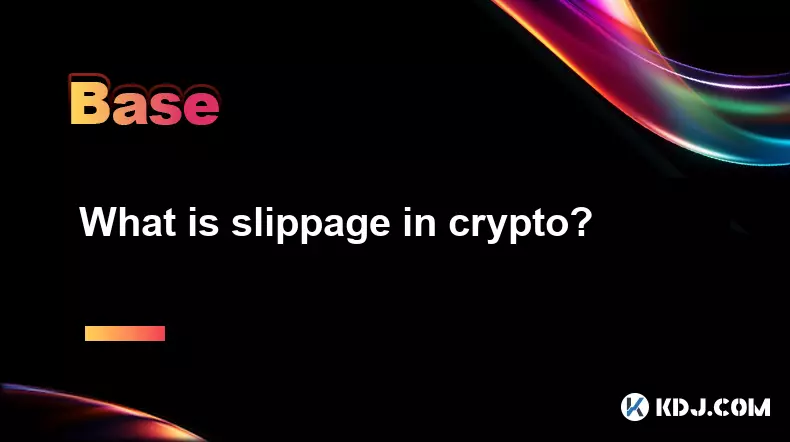
What is slippage in crypto?
Sep 08,2025 at 08:55pm
Understanding Slippage in Cryptocurrency Trading1. Slippage refers to the difference between the expected price of a trade and the actual price at whi...
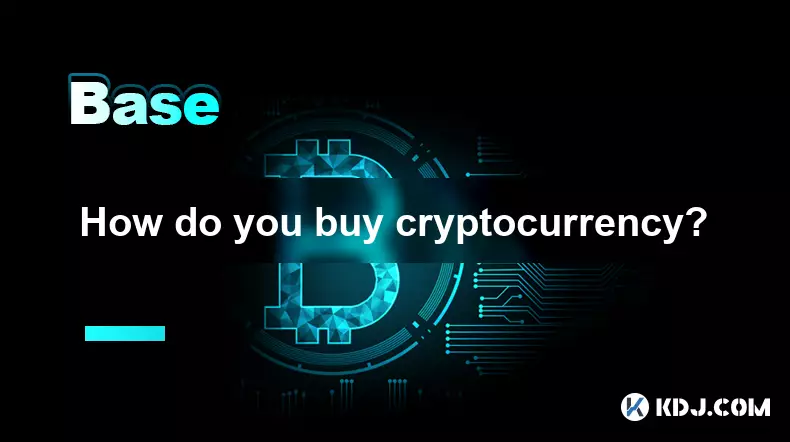
How do you buy cryptocurrency?
Sep 08,2025 at 07:54pm
Understanding the Basics of Cryptocurrency Purchases1. To buy cryptocurrency, you must first choose a reliable digital currency exchange. Platforms li...
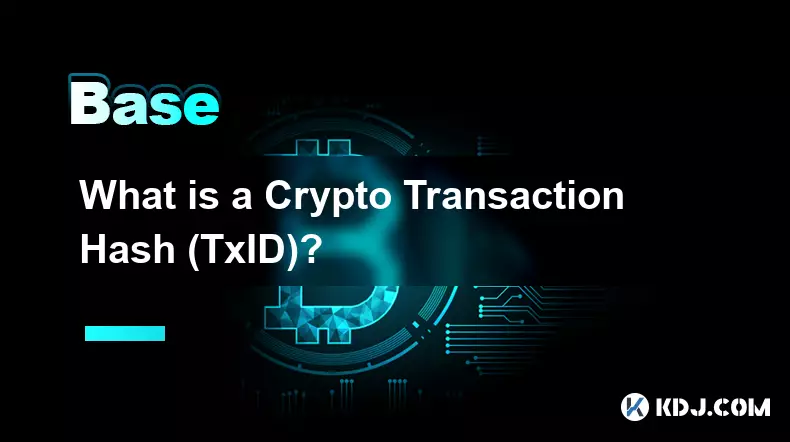
What is a Crypto Transaction Hash (TxID)?
Sep 07,2025 at 01:18pm
Understanding the Role of a Crypto Transaction Hash1. A crypto transaction hash, often referred to as TxID, is a unique identifier generated when a tr...

What is On-Chain and Off-Chain Data?
Sep 07,2025 at 04:55pm
Understanding On-Chain Data1. On-chain data refers to all information that is recorded directly on a blockchain. Every transaction, smart contract exe...
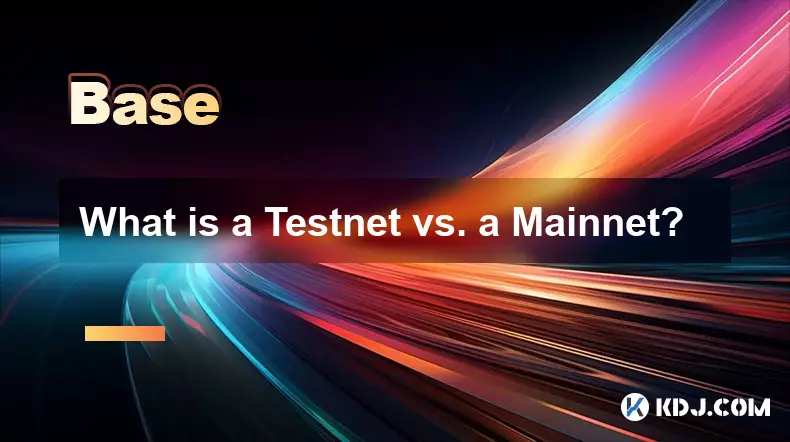
What is a Testnet vs. a Mainnet?
Sep 08,2025 at 05:55am
Understanding the Core Differences Between Testnet and Mainnet1. A Testnet is a parallel blockchain network used exclusively for testing purposes. Dev...

How to do Your Own Research (DYOR) in Crypto?
Sep 08,2025 at 08:00am
Understanding the Foundations of Crypto Projects1. Every cryptocurrency project starts with a foundational whitepaper. This document outlines the tech...

What is slippage in crypto?
Sep 08,2025 at 08:55pm
Understanding Slippage in Cryptocurrency Trading1. Slippage refers to the difference between the expected price of a trade and the actual price at whi...

How do you buy cryptocurrency?
Sep 08,2025 at 07:54pm
Understanding the Basics of Cryptocurrency Purchases1. To buy cryptocurrency, you must first choose a reliable digital currency exchange. Platforms li...

What is a Crypto Transaction Hash (TxID)?
Sep 07,2025 at 01:18pm
Understanding the Role of a Crypto Transaction Hash1. A crypto transaction hash, often referred to as TxID, is a unique identifier generated when a tr...

What is On-Chain and Off-Chain Data?
Sep 07,2025 at 04:55pm
Understanding On-Chain Data1. On-chain data refers to all information that is recorded directly on a blockchain. Every transaction, smart contract exe...

What is a Testnet vs. a Mainnet?
Sep 08,2025 at 05:55am
Understanding the Core Differences Between Testnet and Mainnet1. A Testnet is a parallel blockchain network used exclusively for testing purposes. Dev...

How to do Your Own Research (DYOR) in Crypto?
Sep 08,2025 at 08:00am
Understanding the Foundations of Crypto Projects1. Every cryptocurrency project starts with a foundational whitepaper. This document outlines the tech...
See all articles
























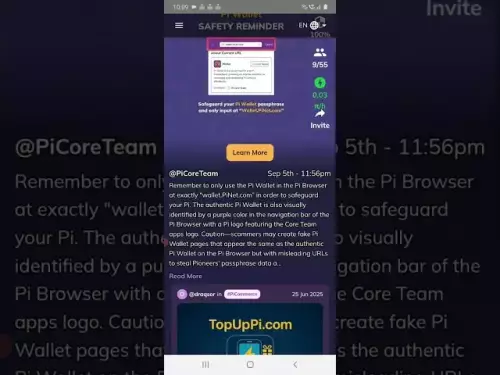
![[Pycoin] PI Coin -US President (Trump) Declaration ?? !! 'US' runs first. / Paikoin mining speed acceleration [Pycoin] PI Coin -US President (Trump) Declaration ?? !! 'US' runs first. / Paikoin mining speed acceleration](/uploads/2025/09/08/cryptocurrencies-news/videos/pycoin-pi-coin-president-trump-declaration-runs-paikoin-mining-speed-acceleration/68bed38c01e7a_image_500_375.webp)































































